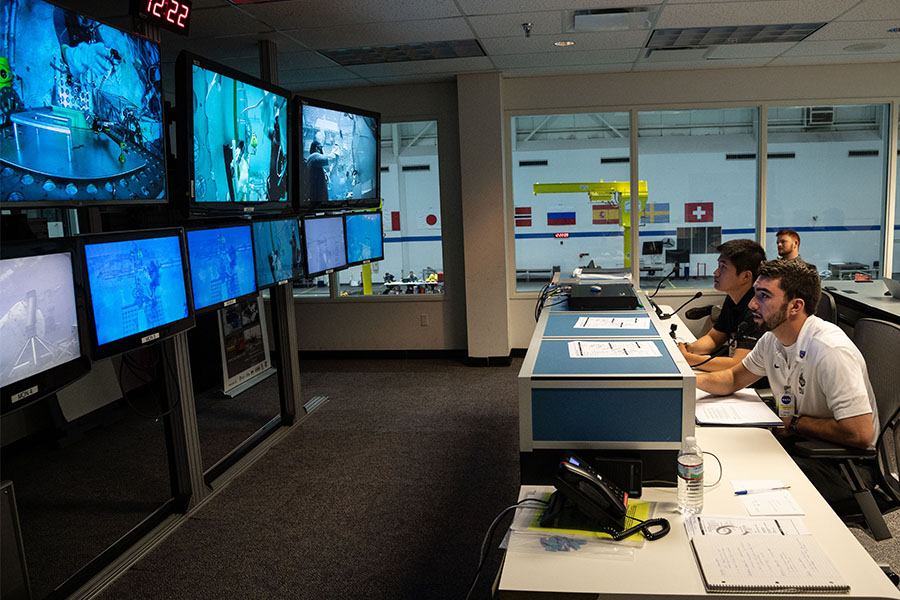AAE selected for NASA's NExT challenge
Update: Due to Covid-19 restrictions, the teams will not be traveling to the NBL in person for the NExT challenge.
Video of the Purdue team's Lunar EVA Prototype testing will be livestreamed from NASA on June 15 10:00am - 4:15pm EDT.
Livestream https://www.ustream.tv/channel/nasa-jsc Password: microg (password is case sensitive)

An eight-member, all-senior team from AAE has been selected by NASA for the 2020 Micro-g Neutral Buoyancy Experiment Design Teams (NExT) challenge, announced Dec. 9.
The competition tasks undergraduate students with designing, building and testing a tool or device that addresses current space exploration challenges. Four challenges were selected by NASA. The AAE418 team — Mike Benner, Ben Durkee, Blake Gossage, Steven Haddad, Jessica Maddox, Carley Mumm, Chase Neff and Jacqueline Ulmer — chose to address the “Lunar Coring Device” challenge.
This is the seventh year of the NExT competition, and AAE418 Zero-Gravity Flight Experiment class has had a proposal selected six times to have its device tested at the Neutral Buoyancy Lab at Johnson Space Center.
“The team and I are extremely excited to have been selected by NASA,” Maddox said. “We have put in many hours to this challenge and are proud to represent Purdue at Johnson Space Center during testing.”
With humans returning to the moon via NASA’s Artemis program in the near future, there are a number of scientific studies NASA wants to engage in. One of which will be obtaining core samples from the surface and from rocks and boulders on. Because astronauts can only carry a limited number of tools, the fourth challenge in NASA NExT tasked students with creating a coring device that an astronaut can deploy, take a core and then capture that core for return to scientists on Earth.
The AAE418 tool is a “sample coring device for lunar EVA operations.” There are three main parts to the design: the stabilizing jig, the coring bit (composed of two pieces) and the containment mechanism.
The device has several unique design features, Maddox said. One is that the stabilizing jig has two plates, the bottom plate laying flat on the surface, with telescoping legs attached. Inside those legs are springs that compress, lowering the top plate toward the surface as drilling occurs. Another unique feature is a coring bit that has teeth coated in tungsten carbide, allowing for core samples to be taken of concrete and ice.
The anticipated test weeks are in June 2021 when professional NBL divers will test the tool, and students will direct divers from the Test Conductor Room of the NBL facility in Houston.
